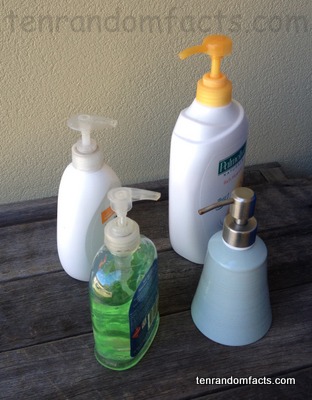Soap dispensers are just one of those inventions you take for granted.
- Soap dispensers are an invention that stores and distributes soap using a mechanical function.
- Soap dispensers typically feature a pump or squeeze bottle to release soap, with a nozzle often protruding from the top.
- Plastic is commonly the material used to make a soap dispenser and is often disposable; however glass and ceramics can also be used.
- Many soap dispensers, especially those for public use, have a nozzle that foams liquid soap, by utilising air.
- Soap dispensers will typically hold liquid soap, while some are designed to hold foam or powdered soap.
- Soap dispensers were used in the early 1800s for liquid soap used in hospitals and other facilities; however these were notorious for being clogged by the thick soap.
- Liquid soap was first patented in 1865 though used earlier, and while it was used in commercial settings, it was not until more than a century later, in 1980, that it was introduced into the home market by Minnetoka Coporation, and as a result, soap dispensers became more commonly used.
- Minnetoka Corporation, to hinder other companies copying their new liquid soap idea, purchased all of the stock of pump mechanisms for soap dispensers that they could, forcing their competitors to wait a whole year before they could launch a competing product.
- Soap dispensers are available in a wide variety of shapes, colours and styles, and decorative ones can sometimes be purchased in a matching bathroom set without soap, which is to be added later, while cheap plastic ones from supermarkets usually contain soap.
- Automatic soap dispensers, activated using sensors, where first patented in 1989, invented by Guey-Chuan Shiau, and have since been a commercial success, and are especially prominent in public bathrooms.
Bibliography:
Bellis M, The History of Soaps and Detergents, 2016, About Inventors, http://inventors.about.com/library/inventors/blsoap.htm
Cretu D, Who Invented Liquid Soap and Why?, 2013, Quora, https://www.quora.com/Who-invented-liquid-soap-and-why
Soap Dispenser, 2015, Wikipedia, https://en.wikipedia.org/wiki/Soap_dispenser







We have used the soap pumps and the foamy rainbow soap that you mentioned at the end. The soap pump wins out “hands down”!!! Very entertaining and we only have used one pump. I plan on saving empties for next time.